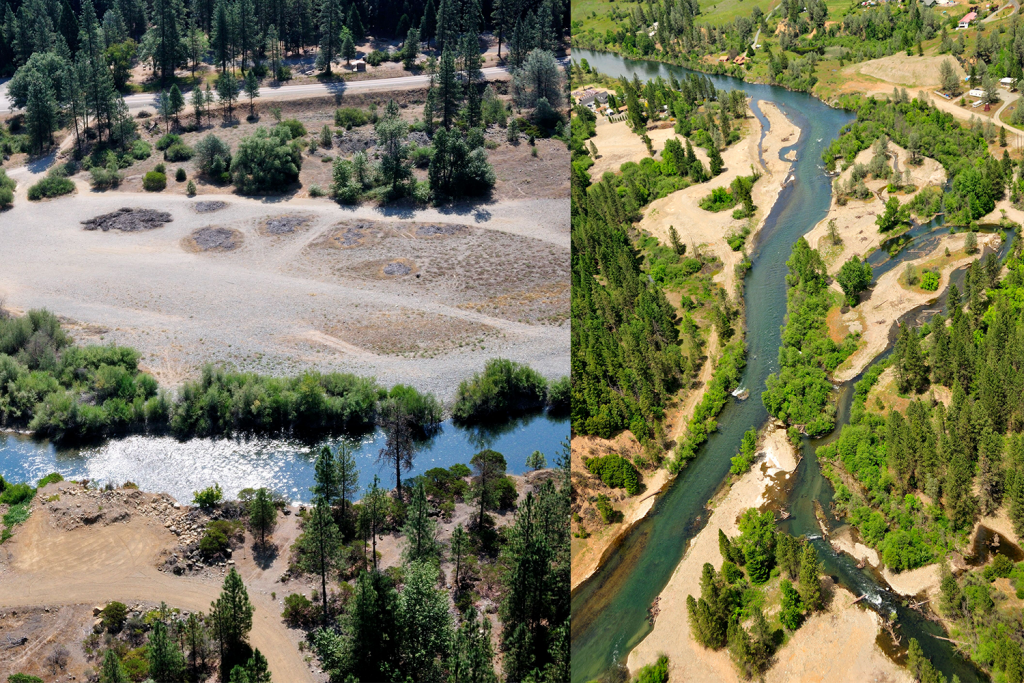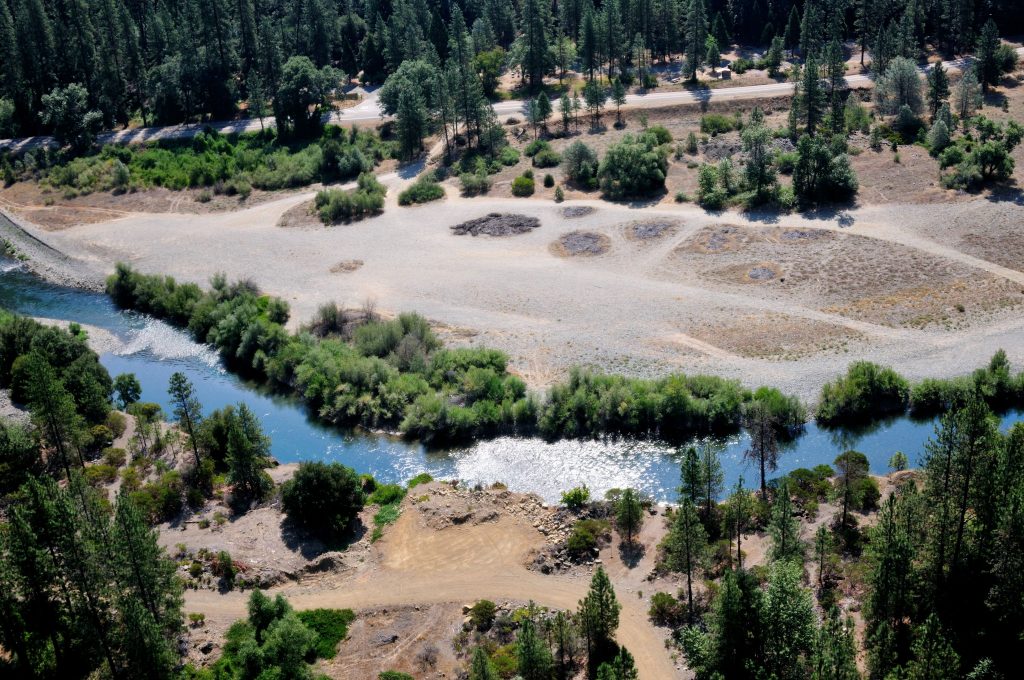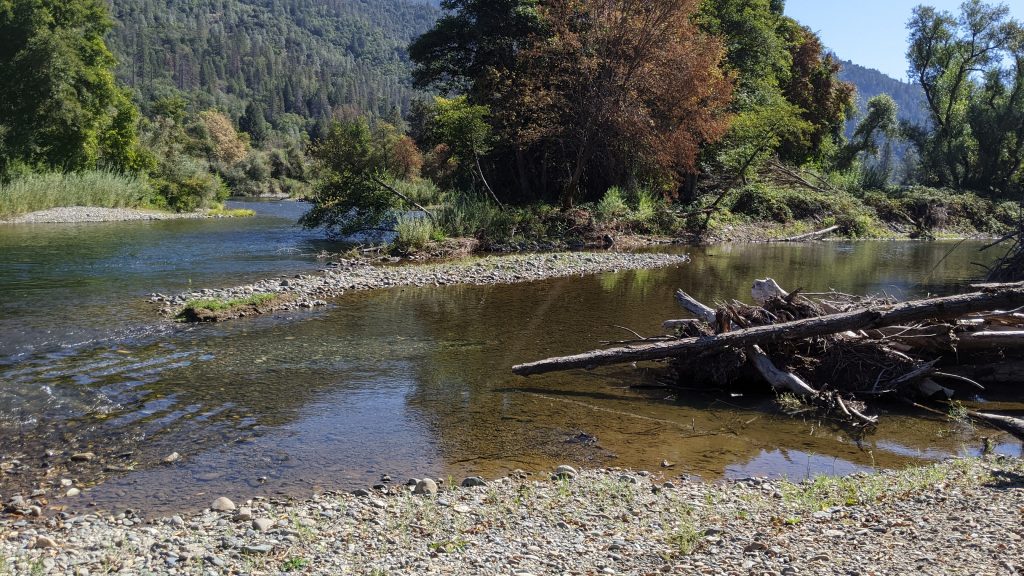With winter fully here and the holidays behind us, the Implementation Branch is moving forward with some exciting restoration proposals. In recent past the TRRP publicly scoped two proposed channel rehabilitation projects, the Upper Conner Creek Rehabilitation Project in Junction City and the Sawmill Gravel Processing Site Project in Lewiston. A draft environmental assessment (EA) will be released in the coming weeks, and then the Implementation Branch and those involved in the project will host a public meeting to discuss the proposed designs and restoration activities. Keep an eye on our calendar or our facebook page for notification of that meeting. We hope to see you there.

Proposed Upper Conner Creek rehabilitation project
The proposed Upper Conner Creek project designs were prepared by the Hoopa Valley Tribal Fisheries Department and McBain Associates. Long term assessment of past restoration work nearby and adaptive management have led program partners to determine that the lowered surfaces of these early projects were not inundating (providing low floodplain habitat) frequently enough. Improvements in floodplain connectivity to the mainstem, as well as course sediment additions and large wood features will open opportunities for the river to rework its form to provide long-term channel complexity and high-quality salmon habitat. The recreational aspect of this area is appreciated by many and was an important feature to consider for this project. Through consultation with local residents and river users, project designers have worked to maintain the Junction City Campground’s river access for boating and swimming. The proposed Upper Conner Creek Project first phase of restoration will begin in the spring of 2024.

![Aerial image of the proposed Sawmill Gravel Processing site. [Ken DeCamp]](https://www.trrp.net/wordterrain/wp-content/uploads/2023/11/Sawmill-Ken-Decamp-2010-680x1024.jpg)
Proposed Sawmill Gravel Processing Site Rehabilitation Project
The proposed Sawmill Gravel Processing Site Rehabilitation Project, prepared by the Yurok Tribal Fisheries Department, the California Department of Water Resources, and the California Department of Fish and Wildlife, seek to decommission a portion of a long-used sediment processing site and do so in an ecologically beneficial way. The proposed project also intends to address a floodplain breach on river right that has dewatered a side channel complex. Repairing this breach will allow adult salmon to spawn throughout the side channel as they have historically.
Sediment and Wood Augmentation Environmental Assessment
Also working its way through the environmental compliance pathway is the TRRP’s Sediment and Wood Augmentation EA. The EA seeks to establish four new augmentation sites and allows for wood placement at the five existing sites in addition to sediment augmentation to address the sediment and wood deficiency upstream of Indian Creek. The new augmentation sites are also located in the upper river near Lewiston and include Dark Gulch, Trinity House Gulch, Steel Bridge, and Vitzthum Gulch. The wood component of the analysis is an exciting addition to the EA. Wood is critical to a dynamic river system as its benefits include creating fish cover, adding hydraulic complexity, connecting the main river with important fish feeding grounds called floodplains, retaining sediment and aiding a variety of river species by creating more robust habitat. The EA wrapped up its public comment period on November 22 and the public draft is available on TRRP.net.

Trinity River Watershed Restoration Programmatic Environmental Assessment
![Restoring the lands that surround the Trinity River is an important part of system restoration. [Trinity County Resource Conservation District]](https://www.trrp.net/wordterrain/wp-content/uploads/2023/11/Picture2-1024x552.png)
Finally, the TRRP’s Trinity River Watershed Restoration Programmatic Environmental Assessment (PEA) is on track to be completed in 2024. The PEA focuses on improving the quality and quantity of accessible cold-water aquatic habitat throughout the lands which flow to the Trinity River. A goal of the PEA is to encourage more stream and riparian habitat restoration projects by providing National Environmental Policy Act (NEPA) coverage to organizations who propose areas in need of restoration.
